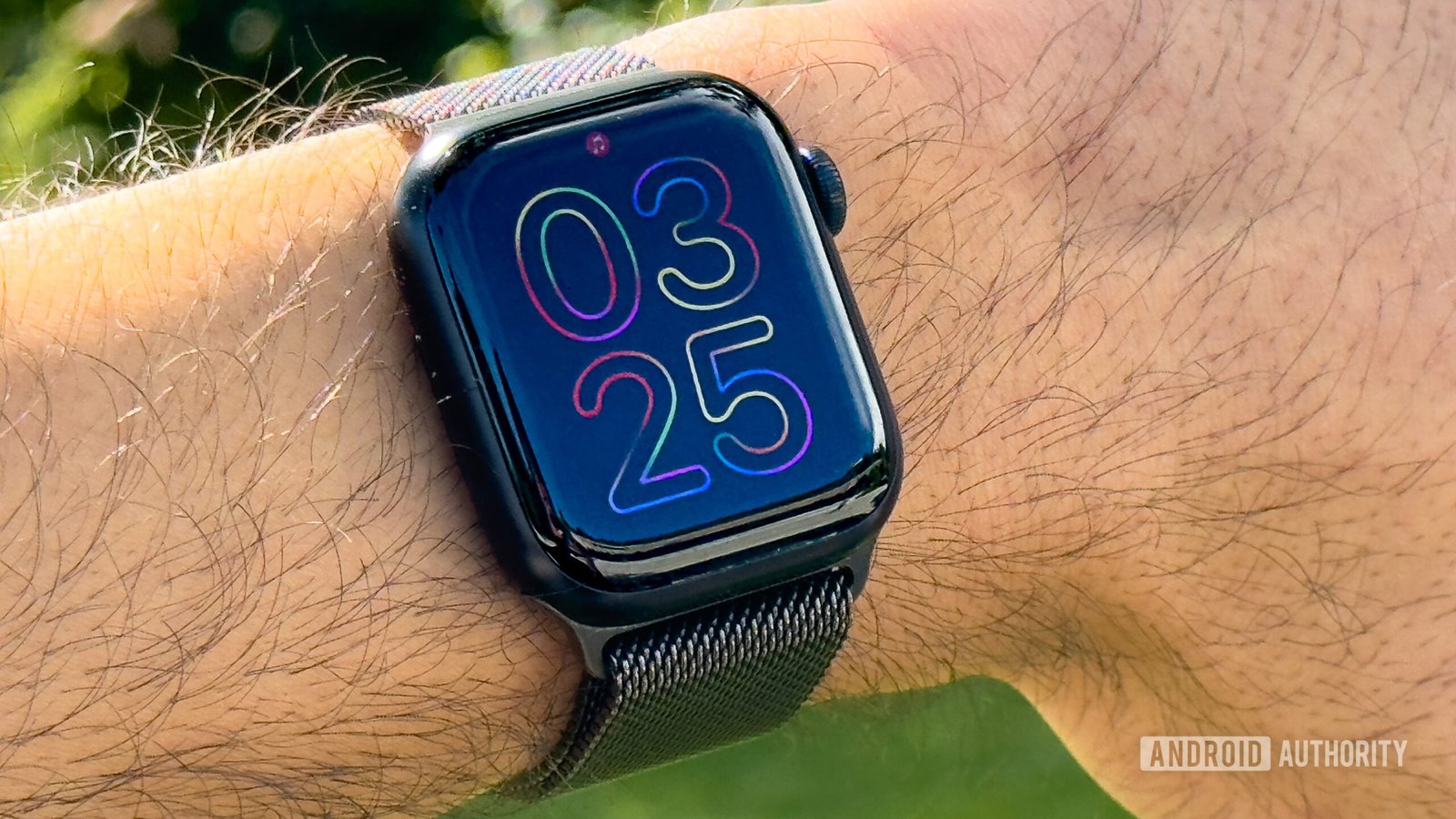
Smarter, more personal than ever
-
by Anoop Singh
- 5
The Apple Watch is objectively one of the best smartwatches on the market. It offers support for fitness tracking, a wide range of health metrics, in addition to tight Apple ecosystem integrations. However, many of those using it to stay active have had a common complaint for years: its unforgiving ring system. Fortunately, watchOS 11 addresses this issue by introducing break days and more flexible goals, along with smarter features that further personalize it.
watchOS 11 won’t be available to the general public until later this year. Nevertheless, I installed developer beta 1 on my Apple Watch Series 9 to document the early experience. Given that watchOS 10 completely overhauled the system last year, version 11 expectedly doesn’t pack as many interesting changes, but below are the most notable ones I’ve found so far.
Healthier fitness goals
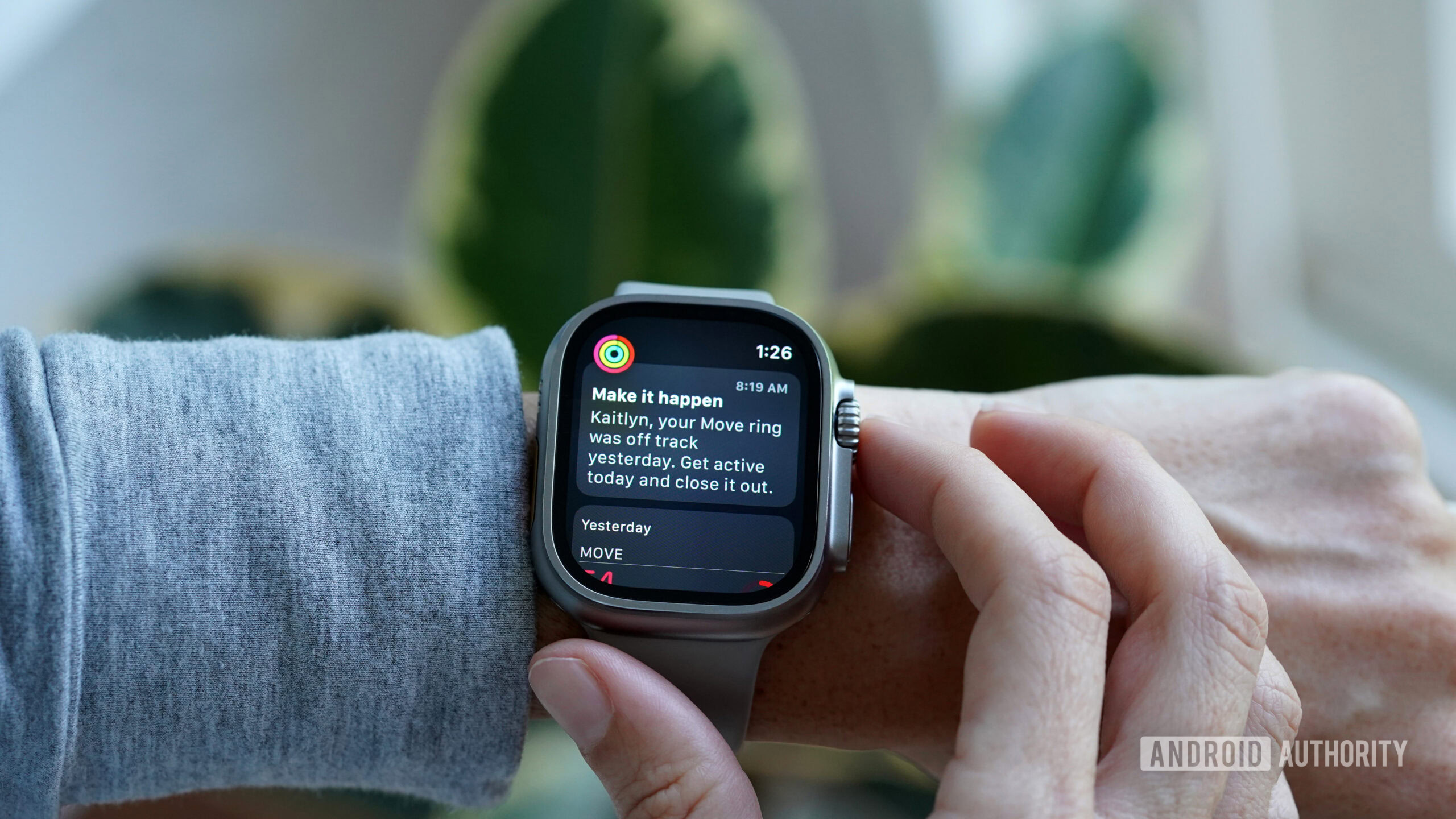
Kaitlyn Cimino / Android Authority
Like many Apple Watch users, I strive to close my rings — or at least I used to. For those unfamiliar, watchOS has a three-ring system, and users can close them by standing up, moving, and exercising for a certain amount of time every day. There are also digital awards that one can earn by maintaining streaks, reaching higher goals, etc. Arguably, this system’s biggest flaw was its increasing demands that bug you the more you complete your goals. Fortunately, this has been addressed on watchOS 11.
In my case, being on a weight gain diet, burning calories beyond a certain point does more harm than good. And this is what eventually pushed me to stop closing my rings religiously and mute the relevant notifications. Reaching my suitable goals was never enough for it, and it always suggested I do more. That’s not to mention that the monthly challenges also get more demanding the more you complete them, which becomes unhealthy at some point — mentally and physically.
It’s refreshing to see Apple finally acknowledging that humans can’t commit to toxic relationships with their wearables.
With watchOS 11, the Fitness app now supports break days, so I can pause my rings for as long as needed without losing any streaks. Furthermore, I can now set my custom ring goals based on the day of the week. So, for example, you could go for more intensive goals on weekends while keeping weekdays more relaxed.
Despite being a relatively minor watchOS 11 addition, it makes all the difference. Apps like Gentler Streak have become successful due to users needing saner goals. So, it’s refreshing to see Apple finally acknowledging that sometimes more is less and that humans can’t commit to toxic relationships with their wearables.
Speaking of Fitness, the app has been redesigned on iOS 18. Like Photos and Control Center, it now has a modular UI that you can fully customize. Once you update your iPhone, you’ll be able to pick the data tiles you care about and hide the rest.
Training Loads and Vitals
Other watchOS 11 additions include Training Loads and Vitals. Starting with the former, this new option allows you to determine how much effort you’ve put into a certain recorded workout. To test it out, I completed a 10-minute HIIT exercise on Fitness Plus and had planned to pick a Training Load score of 7/10. To my surprise, watchOS 11 suggested that exact score on its own and asked me if I’d like to modify it before saving.
I’ve only tested it with one workout so far, so I can’t tell if the automated scores are always that accurate. However, even if they’re not, users have full control over the score and can adjust them as needed. It still was an impressive first impression, to say the least.
Once you use the feature for several days, it’ll display the data meaningfully to help you monitor how much effort you’ve been putting in during your exercises. It could be especially helpful to athletes who spend a lot of time and effort building vigorous workout habits, as it helps visualize the direction they’re heading in.
Training Loads could be especially helpful to athletes who spend a lot of time and effort building vigorous workout habits.
Conversely, Vitals requires no user input beyond activating and using the existing sleep-tracking feature. Once the app collects enough data, it will start displaying summaries of your heart rate, respiratory rate, wrist temperature, blood oxygen, and sleep duration during a certain night.
Both Training Loads and Vitals require several days to collect data and calibrate before displaying any results, and not enough time has passed for them to function yet for me, but we’ll revisit this down the road when the stable version rolls out and we get new Apple Watch models to test.
Smarter Smart Stack
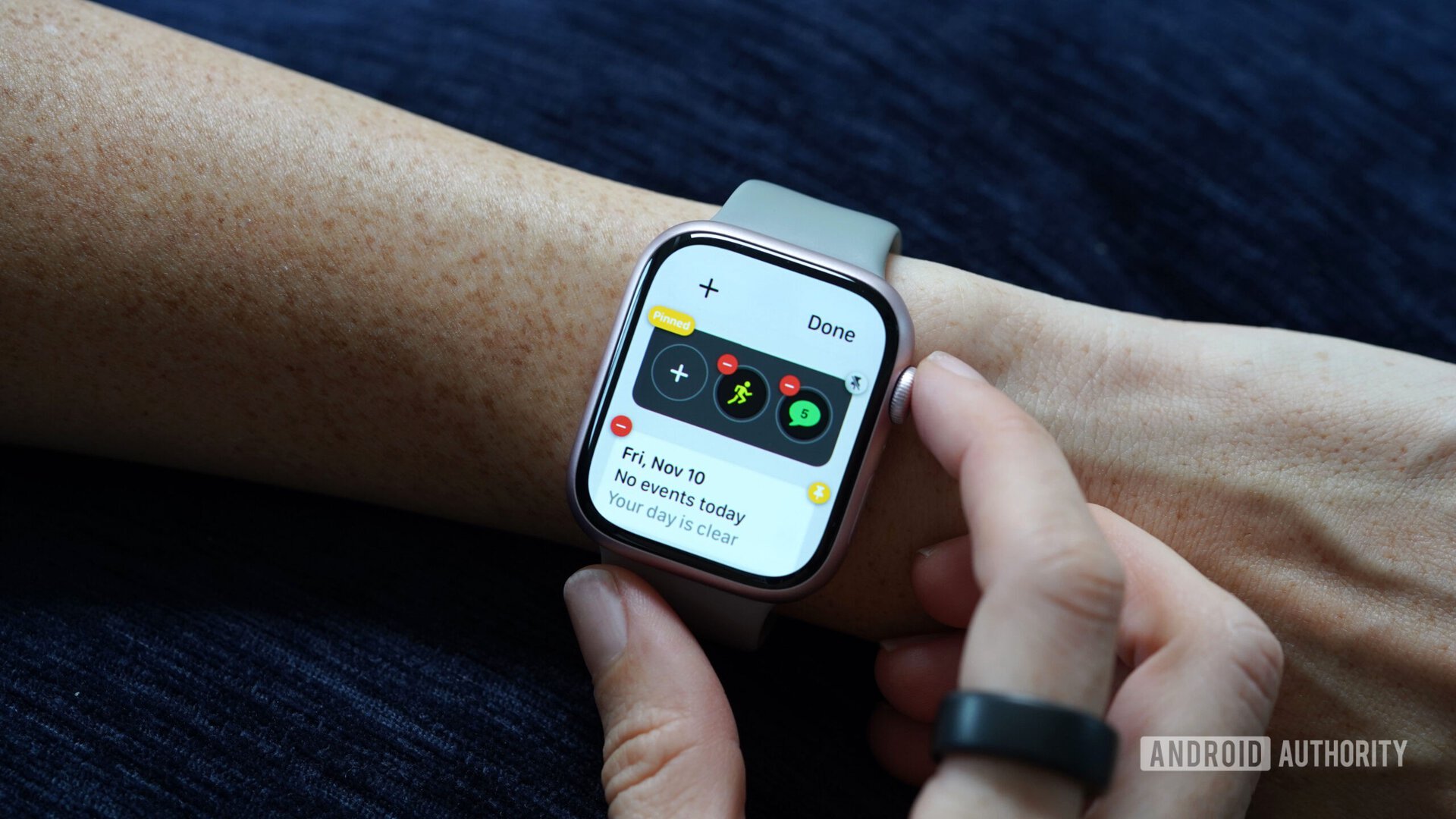
Kaitlyn Cimino / Android Authority
With watchOS 10, Apple introduced the Smart Stack. It’s a customizable pile of widgets that users can quickly access by rotating the Digital Crown or swiping up on the watch face. watchOS 11 takes the feature to the next level by introducing automatically suggested widgets. So, for example, after taking a walk, a card highlighting the distance you’ve traveled surfaces. Similarly, since I live in Georgia (the country), it often suggests a card to translate between English and Russian, as Georgian is not supported by Apple Translate, and Russian is widely spoken here.
The new Smart Stack presents useful cards based on your current location, time of day, and other factors.
The new Smart Stack presents useful cards based on your current location (both the country in general and the specific neighborhood), time of day, and other factors. Other examples include a widget highlighting the weather in my current location and the Now Playing tile when I listen to music on my iPhone or nearby HomePod. It also mirrors the iPhone’s Live Activities, making it easier to track time-sensitive tasks on the go.
What I dislike about the new Smart Stack is that it becomes the default wake-up screen at random times of the day. So, when I check my Apple Watch, it sometimes displays that instead of the main watch face. I can’t tell if this is a bug or intended behavior, as this only happens when there’s a new relevant card in the suggestions.
Beyond the smarts, watchOS 11 also supports more widget options for the built-in apps, which users can manually add to their Smart Stack.
A push towards independence
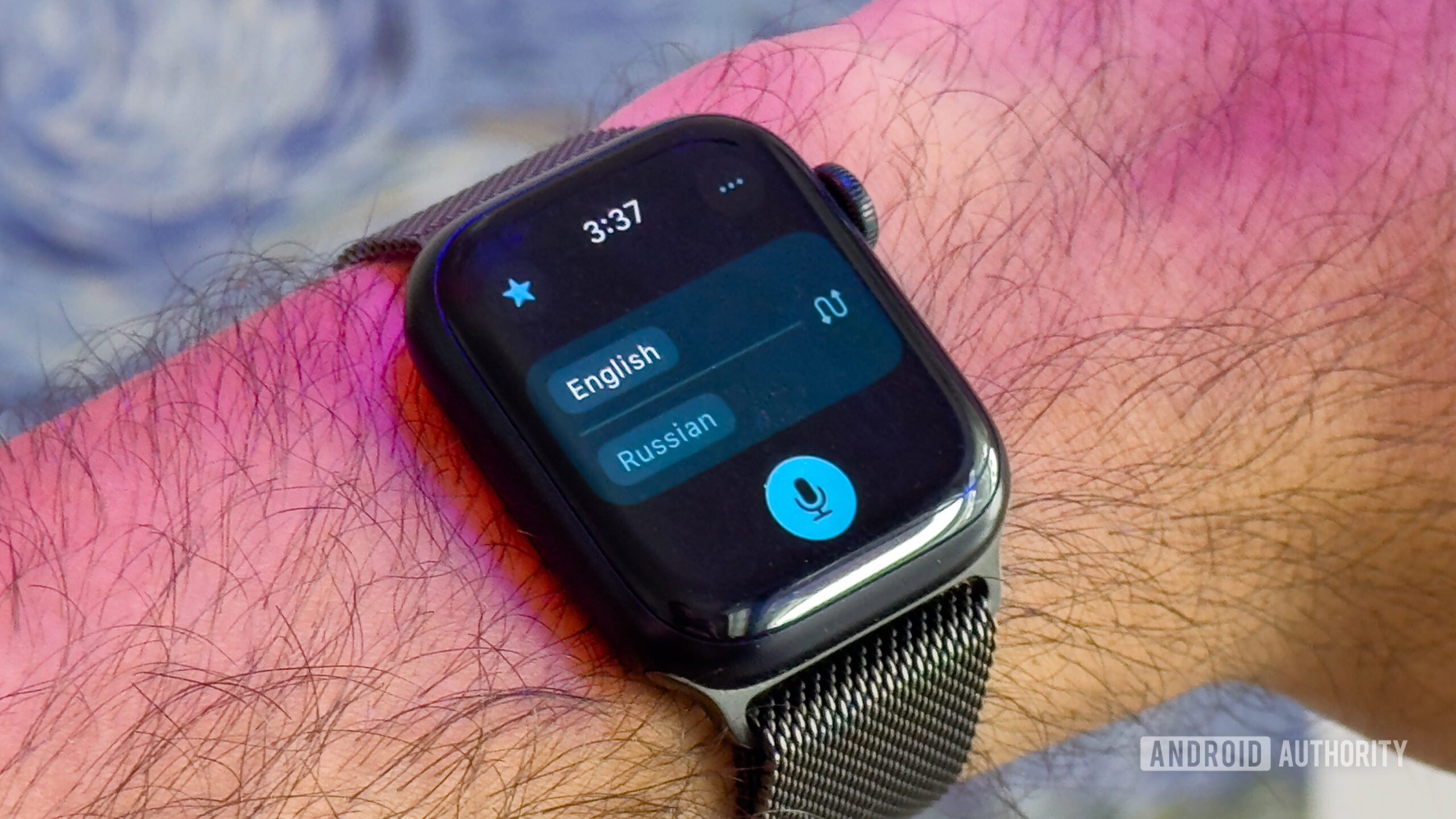
Mahmoud Itani / Android Authority
Other watchOS 11 additions include a new Apple Translate app, Check In support on iMessage, and a built-in Music Recognition app. With Translate, you can use voice or text input, but it defaults to the former mode for obvious reasons. Meanwhile, Check In allows you to temporarily share your live location with a contact to ensure you make it to your destination safely. Prior to watchOS 11, this feature was exclusive to iOS.
The new Music Recognition app is similar to Apple’s Shazam app on watchOS, but it now comes pre-installed on all watches running this OS version. You can delete the new built-in Music Recognition app if you don’t need it, just like some other first-party watchOS apps.
These additions further emphasize the Apple Watch as a standalone device. watchOS users are slowly starting to need their iPhones for fewer tasks. While the smaller display makes executing complex tasks for long periods challenging, those going out for a run can now easily leave their iPhones behind.
watchOS 11 beta 1 hands-on impressions: The verdict
After using watchOS 11 beta 1 for a few days, I can safely say it’s a pretty decent update. While it’s a shame that Apple didn’t introduce any new watch faces (beyond tweaking the existing Photos one), the more lenient ring system and powerful Smart Stack truly make a difference. Now, I often raise my wrist to find a relevant card presenting useful data based on where I am and what I’m up to. It feels like a personal experience that I don’t have to set up or adjust manually. In a way, watchOS 11 understands me.
While the Training Loads and Vitals features haven’t materialized on my end yet, I’m excited to view the graphs they’ll present in a few days. As someone who enjoys causally analyzing data and comparing different sets, I’ll always welcome new metrics on watchOS.
Should you download and install watchOS 11 beta 1?
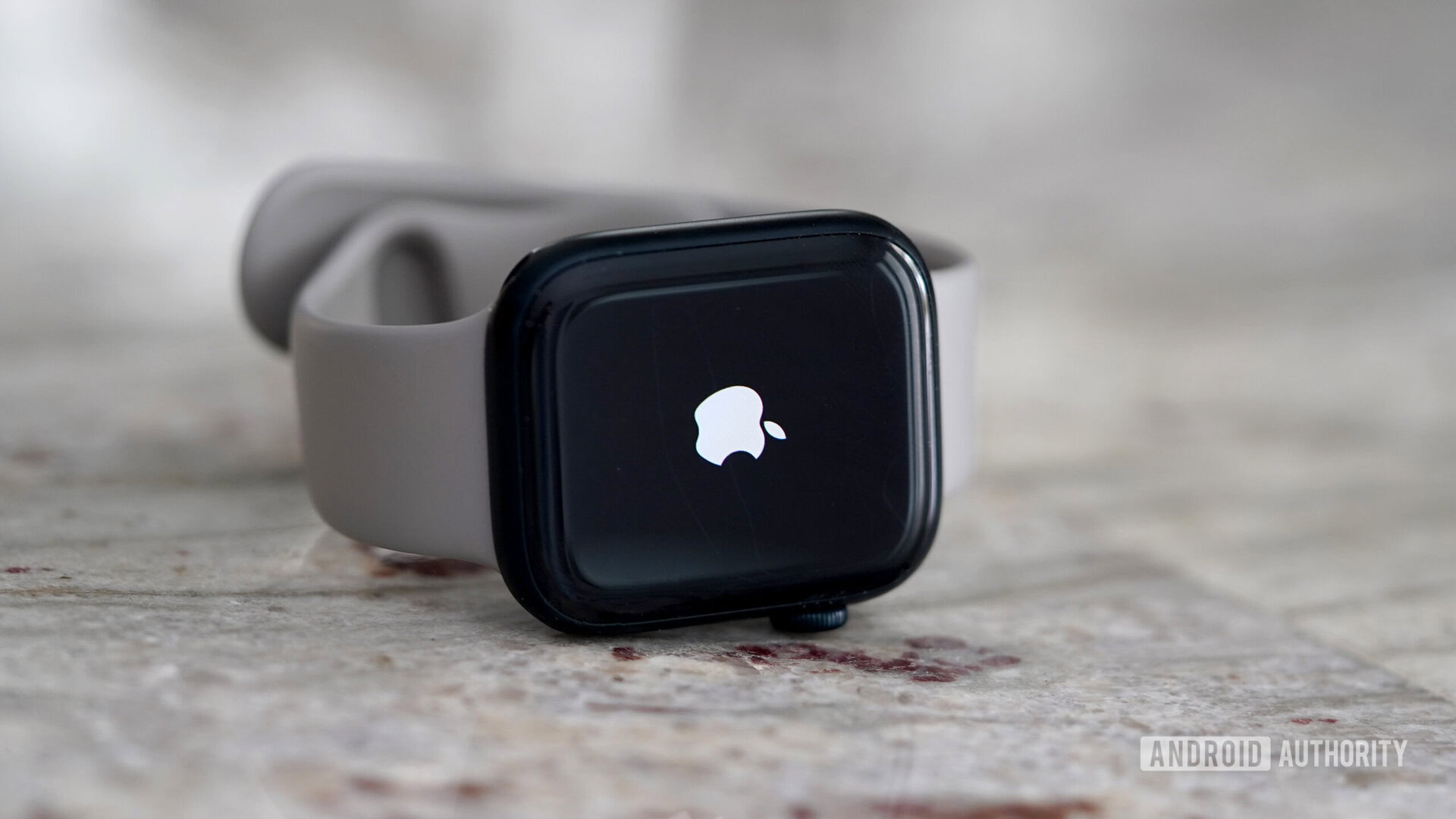
Kaitlyn Cimino / Android Authority
No, you should not install watchOS 11 beta 1 on your Apple Watch. Unlike iPhones, iPads, and Macs, you may be unable to revive your Apple Watch on your own if you brick it. In this case, you would have to head to an Apple Store or authorized service provider to get it repaired. Unless you’re a developer working on watchOS apps, I would advise you to refrain from installing pre-release OS versions on your Apple Watch, especially when it’s the first developer beta.
Not convinced by my plea? You can check out how to install it here (but don’t!).
When will watchOS 11 be released?
watchOS 11 beta 1 is now available to those who have signed up for Apple’s developer program. The Cupertino firm will then expand the pre-release software’s availability to those in the public beta program around mid-July. Finally, the testing phase should end in late September, and that’s when we expect Apple to release watchOS 11 to all users.
Does my Apple Watch support watchOS 11?
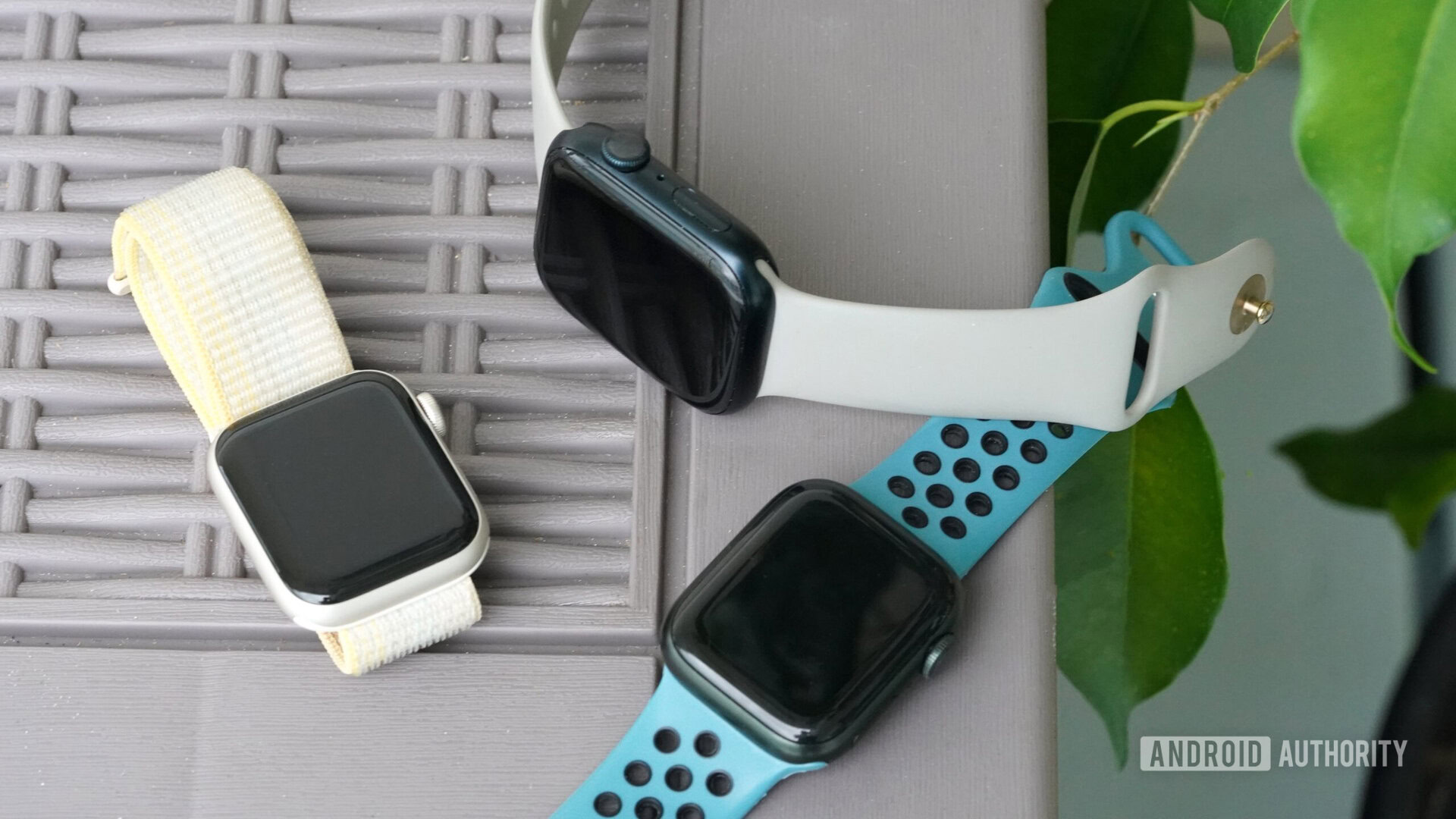
Kaitlyn Cimino / Android Authority
watchOS 11 is compatible with the following models:
- Apple Watch SE 2
- Apple Watch Series 6 and later
- Both Apple Watch Ultra models
It’s worth highlighting that some of the new features may be unavailable on older Apple Watch models that support watchOS 11.
The Apple Watch is objectively one of the best smartwatches on the market. It offers support for fitness tracking, a wide range of health metrics, in addition to tight Apple ecosystem integrations. However, many of those using it to stay active have had a common complaint for years: its unforgiving ring system. Fortunately, watchOS 11…
The Apple Watch is objectively one of the best smartwatches on the market. It offers support for fitness tracking, a wide range of health metrics, in addition to tight Apple ecosystem integrations. However, many of those using it to stay active have had a common complaint for years: its unforgiving ring system. Fortunately, watchOS 11…
